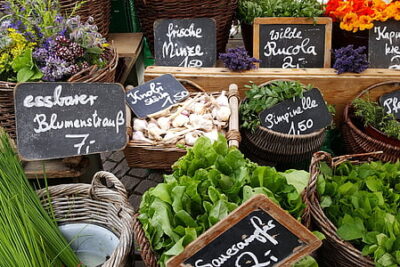
Stained Glass-Friendly Succulents: Plants for Decor

Stained glass has long been a popular form of artistic expression, with its vibrant colors and intricate designs capturing the imaginations of many. Whether found in churches, homes, or other architectural settings, stained glass adds a touch of beauty and elegance to any space. One way to enhance the visual appeal of stained glass is by incorporating plants that complement and enhance its beauty. We will explore the world of stained glass-friendly succulents and learn about the different types of plants that can be grown alongside stained glass to create a stunning and harmonious display.
We will delve into the characteristics of succulents that make them ideal for growing near stained glass. We will also explore the different varieties of succulents that are not only visually appealing but also thrive in low-light conditions. Additionally, we will provide tips on how to care for these plants and suggest creative ways to incorporate them into your stained glass displays. Whether you are a stained glass enthusiast or simply looking to add a touch of greenery to your space, this article will provide you with the inspiration and knowledge needed to create a beautiful and vibrant environment.
- Choose succulents with vibrant colors and interesting shapes to create an eye-catching stained glass effect
- Opt for succulents that have translucent leaves or petals, allowing light to pass through and enhance the stained glass effect
- Arrange the succulents in a pattern or design that mimics the look of stained glass, such as geometric shapes or floral motifs
- Use a variety of succulents with different heights and textures to add depth and dimension to your stained glass display
- Place the succulents in a well-lit area, such as near a window or under grow lights, to maximize the visual impact of the stained glass effect
- Water the succulents sparingly, as they are drought-tolerant plants, to maintain their health and prevent damage to the stained glass appearance
- Consider using a clear or colored glass container to house the succulents, further emphasizing the stained glass effect
- Add decorative elements such as colored glass beads or pebbles to enhance the overall aesthetic of the stained glass display
- Frequently Asked Questions
Choose succulents with vibrant colors and interesting shapes to create an eye-catching stained glass effect
When it comes to decorating your home or office, incorporating plants can add a touch of life and beauty to any space. Succulents, with their unique shapes and vibrant colors, are a popular choice for plant enthusiasts. However, if you want to take your plant decor to the next level, consider choosing succulents that create a stained glass effect.
Stained glass is known for its intricate designs and brilliant colors that capture and reflect light. By selecting succulents with vibrant hues and interesting shapes, you can mimic the captivating effect of stained glass in your plant arrangement.
Choosing the Right Succulents
- Echeveria 'Lola': This succulent features rosettes of pastel pink and blue-green leaves that resemble delicate stained glass windowpanes.
- Kalanchoe 'Flapjack': With its thick, paddle-shaped leaves in shades of red, orange, and yellow, this succulent creates a warm and inviting stained glass effect.
- Aeonium 'Kiwi': The variegated leaves of this succulent display shades of green, yellow, and pink, resembling a stunning mosaic of stained glass.
These are just a few examples of succulents that can create a stained glass-inspired display. By mixing and matching different varieties, you can create a visually stunning arrangement that adds a pop of color and elegance to any space.
Arranging Your Stained Glass Succulents
When it comes to arranging your stained glass succulents, there are a few tips to keep in mind:
 Discover the Best Place to Join the Succulent of the Month Club
Discover the Best Place to Join the Succulent of the Month Club- Contrasting Colors: Pair succulents with contrasting colors to create a dynamic and eye-catching display. For example, combine a succulent with pink leaves with one that has vibrant green foliage.
- Varying Heights: Play with the height of your succulents to add dimension to your arrangement. Place taller succulents towards the back and shorter ones towards the front.
- Groupings: Create groupings of succulents with similar colors or shapes to create a cohesive stained glass effect.
With these tips in mind, you can arrange your stained glass succulents in a way that highlights their unique colors and shapes, creating a visually stunning display that will surely impress your guests.
By selecting succulents with vibrant colors and interesting shapes, you can create a stained glass effect that adds a touch of elegance and beauty to any space. So next time you're looking to decorate with plants, consider incorporating these stained glass-friendly succulents into your interior design.
Opt for succulents that have translucent leaves or petals, allowing light to pass through and enhance the stained glass effect
When it comes to adding a touch of beauty and color to your stained glass windows, incorporating plants can be a wonderful idea. However, not all plants are suitable for this purpose. If you want to create a stunning stained glass effect, it is important to choose the right type of plants. Opting for succulents with translucent leaves or petals can be the perfect choice.
Succulents are known for their ability to store water in their leaves, stems, and roots, making them resilient and low-maintenance plants. Their unique shapes and textures add visual interest to any space, but when combined with stained glass, they create a captivating display of light and color.
Why choose succulents with translucent leaves?
By selecting succulents that have translucent leaves or petals, you allow light to pass through them. This not only enhances the beauty of the stained glass but also creates a magical effect as the sunlight filters through the plant's foliage.
Translucent succulents can create a mesmerizing play of colors and shadows when placed near a stained glass window. The light passing through the leaves or petals can cast intricate patterns on the surrounding surfaces, transforming your space into a work of art.
Top choices for stained glass-friendly succulents
Here are some stunning succulents that are known for their translucent leaves or petals:
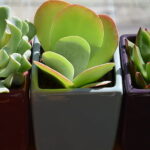 Find the Best Wholesale Suppliers for Bulk Succulent Plants Near You
Find the Best Wholesale Suppliers for Bulk Succulent Plants Near You- Echeveria 'Perle von Nürnberg': This popular succulent features rosettes of pale lavender-gray leaves with a hint of pink. Its plump leaves allow light to pass through, creating an ethereal glow.
- Haworthia cooperi: With its transparent leaves arranged in a rosette pattern, this succulent is a perfect choice for enhancing the stained glass effect. Its pale green leaves turn translucent when backlit.
- Graptoveria 'Fred Ives': This succulent has beautiful rosettes of thick, fleshy leaves that range in color from lavender to pink. When paired with stained glass, its translucent leaves create a stunning visual impact.
These succulents, among others with translucent features, can be found at your local nursery or online plant stores. Experiment with different varieties and arrangements to find the perfect combination that complements your stained glass windows.
Caring for stained glass-friendly succulents
Like all succulents, stained glass-friendly varieties have specific care requirements. They thrive in well-draining soil and prefer bright, indirect sunlight. Overwatering can be detrimental to their health, so it's important to allow the soil to dry out between waterings.
Additionally, ensure that your stained glass-friendly succulents are not exposed to extreme temperatures or drafts. Maintain a consistent temperature and protect them from frost during colder months.
With a little care and attention, your stained glass-friendly succulents will continue to thrive and bring beauty to your space.
So, if you're looking to add a touch of charm and elegance to your stained glass windows, consider incorporating succulents with translucent leaves or petals. Their unique ability to enhance the stained glass effect through the play of light and color will leave you and your guests mesmerized.
Arrange the succulents in a pattern or design that mimics the look of stained glass, such as geometric shapes or floral motifs
When it comes to decorating your space with succulents, why not take inspiration from the beauty of stained glass? By arranging your succulents in a pattern or design that mimics the look of stained glass, you can create a unique and visually stunning display.
One option is to create geometric shapes using different varieties of succulents. For example, you can arrange a collection of Echeveria in a rectangular shape, with each plant representing a different color. This will give the illusion of a stained glass window, with the vibrant hues of the succulents shining through.
 Uncover Expert Tips for Your Succulent Garden: Meet the Emerging Guru
Uncover Expert Tips for Your Succulent Garden: Meet the Emerging GuruAnother design idea is to create floral motifs with your succulents. Choose succulents that resemble flowers, such as Kalanchoe or Graptopetalum, and arrange them in the shape of a flower or a bouquet. This will not only add a touch of elegance to your space but also give a nod to the intricate details found in stained glass art.
To enhance the stained glass effect, consider using containers with colored glass or translucent materials. This will allow the light to filter through the succulents, creating a beautiful play of colors and shadows. You can also place your succulents near a window where they can receive ample sunlight, further enhancing the stained glass-like effect.
Why choose stained glass-friendly succulents?
Opting for stained glass-friendly succulents is a great choice for several reasons. Firstly, succulents are known for their ability to thrive in various conditions, making them low-maintenance and easy to care for. This means that even if you're new to gardening or have a busy lifestyle, you can still enjoy the beauty of stained glass-inspired succulents without much effort.
Additionally, stained glass-friendly succulents often have vibrant and eye-catching colors, making them perfect for creating a visually appealing display. Their unique shapes and textures also add an interesting element to the overall design.
Furthermore, succulents are known for their ability to purify the air by removing toxins and releasing oxygen. This makes them not only visually appealing but also beneficial for your indoor environment.
Popular stained glass-friendly succulents
- Echeveria: With its rosette-shaped leaves and vibrant colors, Echeveria is a popular choice for creating stained glass-inspired displays. Varieties like 'Lola,' 'Perle von Nürnberg,' and 'Blue Atoll' are particularly stunning.
- Kalanchoe: Known for its vibrant and long-lasting flowers, Kalanchoe is a great choice for adding a touch of color to your stained glass-inspired arrangement.
- Graptopetalum: With its delicate and rosette-shaped leaves, Graptopetalum adds an elegant touch to any stained glass-inspired design.
- Sedum: Sedum varieties like 'Jelly Bean' and 'Burro's Tail' have unique and eye-catching foliage, making them a great addition to stained glass-inspired arrangements.
By choosing stained glass-friendly succulents, you can create a beautiful and artistic display that will bring a touch of elegance to your space. So go ahead, get creative, and let your succulents shine like stained glass!
Use a variety of succulents with different heights and textures to add depth and dimension to your stained glass display
 Step-by-Step Guide to Stunning Succulent Home Displays
Step-by-Step Guide to Stunning Succulent Home DisplaysWhen it comes to decorating with stained glass, incorporating plants can bring a whole new level of beauty and vibrancy to your space. Succulents, with their unique shapes and vibrant colors, are an excellent choice for complementing stained glass pieces. Not only do they add a touch of nature, but they also thrive in various conditions, making them perfect for both indoor and outdoor displays.
Choosing the right succulents
When selecting succulents to pair with stained glass, it's important to consider their height, texture, and color. By combining a variety of succulents, you can create a visually appealing arrangement that enhances the overall aesthetics of your stained glass display.
- Height: Opt for succulents with varying heights to create an interesting visual dynamic. Taller succulents like Echeveria 'Black Prince' or Aeonium arboreum 'Zwartkop' can serve as focal points, while shorter varieties like Haworthia or Sedum 'Burrito' can be used to fill in the gaps.
- Texture: Succulents come in a range of textures, from smooth and glossy to fuzzy and spiky. Consider incorporating a mix of textures to add depth and tactile interest to your stained glass display. Plants like Echeveria 'Lola' with its ruffled leaves or Euphorbia tirucalli 'Sticks on Fire' with its slender branches can create stunning contrasts.
- Color: Succulents offer a wide spectrum of colors, allowing you to choose plants that complement or contrast with the colors in your stained glass. For instance, if your stained glass piece features predominantly cool blue tones, pairing it with succulents like Sedum 'Blue Spruce' or Graptosedum 'California Sunset' can create a harmonious and visually pleasing arrangement.
Arranging your succulents
Once you've selected your succulents, it's time to arrange them in your stained glass display. Consider the placement of each plant to ensure they are evenly distributed and create a balanced composition. You can use planters or containers of different shapes and sizes to add further visual interest to your arrangement.
- Layering: Place taller succulents towards the back or center of your display, gradually transitioning to shorter ones towards the front. This layering technique adds depth and dimension to the arrangement.
- Grouping: Create clusters of succulents with similar colors or textures to create focal points within the display. This grouping technique helps draw attention to specific areas, enhancing the overall visual impact.
- Spacing: Allow enough space between each succulent to showcase their individual beauty. Avoid overcrowding, as it can hinder their growth and make it difficult to appreciate each plant's unique characteristics.
Remember to consider the lighting and watering requirements of your succulents when choosing their placement. Most succulents prefer bright indirect light and well-draining soil, so ensure they receive adequate sunlight and are planted in suitable containers.
By carefully selecting and arranging a variety of succulents, you can create a stunning display that perfectly complements your stained glass. The combination of natural beauty and artistic craftsmanship will surely mesmerize anyone who lays eyes on your stained glass-friendly succulent arrangement.
 Top Flower Choices for Planting with Succulents: A Guide
Top Flower Choices for Planting with Succulents: A GuidePlace the succulents in a well-lit area, such as near a window or under grow lights, to maximize the visual impact of the stained glass effect
Succulents are known for their unique and eye-catching appearance, and when paired with stained glass, they can create a mesmerizing visual display. To make the most of this combination, it's important to place the succulents in a well-lit area.
Whether you choose to display your stained glass succulents near a window or under grow lights, providing them with ample light will enhance the beauty of their colors and textures. Natural sunlight is ideal, as it brings out the vibrant hues and intricate patterns of the stained glass. However, if natural light is limited, you can use artificial grow lights specifically designed for plants to provide the necessary light intensity.
By positioning your succulents in a well-lit area, you will maximize the visual impact of the stained glass effect. The light passing through the colorful glass will illuminate the succulents from different angles, creating a stunning play of light and shadows.
Water the succulents sparingly, as they are drought-tolerant plants, to maintain their health and prevent damage to the stained glass appearance
When it comes to choosing plants that complement stained glass, succulents are an excellent choice. These unique plants not only add a touch of greenery to your decor, but their vibrant colors and interesting textures can really enhance the beauty of stained glass windows or panels. However, it's important to remember that succulents have specific care needs, and watering them sparingly is key to maintaining their health and preserving the delicate stained glass appearance.
Why are succulents perfect for stained glass?
Succulents are known for their ability to store water in their leaves, stems, and roots, making them highly drought-tolerant. This characteristic is what makes them an ideal choice for stained glass-friendly plants. Their water-storing capability means they require less frequent watering compared to other plants, which helps prevent excess moisture that could potentially damage the stained glass surface.
 Discover the Ultimate Source for Amazing Succulent Deals
Discover the Ultimate Source for Amazing Succulent DealsHow to water succulents correctly
When it comes to watering succulents, less is more. Overwatering can lead to root rot and other issues that can adversely affect the appearance of your stained glass. To avoid this, follow these watering guidelines:
- Check the soil: Before watering, always check the moisture level of the soil. Stick your finger about an inch into the soil - if it feels dry, it's time to water. If it's still moist, hold off on watering for a few more days.
- Water deeply: When you do water your succulents, make sure to water deeply. This means thoroughly soaking the soil until water drains out of the drainage holes at the bottom of the pot. This helps ensure that the entire root system receives adequate hydration.
- Allow the soil to dry out: After watering, allow the soil to dry out completely before watering again. Succulents prefer a dry environment, so it's important to let the soil dry out between watering sessions.
Additional care tips for stained glass-friendly succulents
- Provide adequate sunlight: Succulents thrive in bright light, so place them in a spot where they can receive at least six hours of sunlight per day. However, be cautious of placing them directly in harsh, intense sunlight, as this can lead to sunburn.
- Use well-draining soil: Succulents require well-draining soil to prevent excess moisture retention. Consider using a potting mix specifically formulated for succulents or adding perlite or sand to improve drainage.
- Monitor for pests: Keep an eye out for common succulent pests like mealybugs or aphids. If you notice any signs of infestation, take appropriate measures to control and eliminate the pests.
With proper care and attention, your stained glass-friendly succulents will thrive and continue to enhance the beauty of your stained glass decor. Remember to water them sparingly, provide adequate sunlight, and ensure well-draining soil to maintain their health and preserve the stunning appearance of your stained glass.
Consider using a clear or colored glass container to house the succulents, further emphasizing the stained glass effect
When it comes to adding a touch of beauty and uniqueness to your home decor, few things can compare to the timeless charm of stained glass. The vibrant colors and intricate patterns create a mesmerizing effect that can elevate any space. If you're a fan of stained glass and want to incorporate this art form into your indoor garden, why not consider combining it with the natural beauty of succulents?
By using a clear or colored glass container, you can create a stunning display that highlights the stained glass effect. The transparent or tinted walls of the container will allow the light to filter through, casting colorful shadows and enhancing the overall visual appeal.
Choosing the Right Succulents
Not all succulents are suitable for this kind of display. To truly achieve the stained glass effect, you need to choose plants with vibrant colors and interesting textures. Here are a few options that work well:
- Echeveria: Known for their rosette-shaped leaves, echeverias come in a variety of hues, from pastel pinks and purples to bold oranges and reds. Their thick, fleshy leaves add a unique texture to the arrangement.
- Sedum: With their diverse foliage and charming clusters of tiny flowers, sedums can add a pop of color and visual interest to your stained glass succulent garden.
- Crassula: Crassulas, also known as jade plants, offer a range of leaf colors, including shades of green, yellow, and red. Their compact growth habit makes them ideal for small glass containers.
Arranging Your Stained Glass Succulent Garden
Once you have selected the perfect succulents, it's time to arrange them in your glass container. Here are a few tips to help you create a visually pleasing display:
 Can Different Types of Succulents Thrive Together in the Same Garden?
Can Different Types of Succulents Thrive Together in the Same Garden?- Vary the heights: Place taller succulents towards the back of the container and shorter ones towards the front. This adds depth and dimension to the arrangement.
- Mix and match colors: Experiment with different color combinations to create a visually striking display. Consider using succulents with complementary or contrasting hues.
- Play with textures: Combine succulents with different leaf shapes and textures to add visual interest. Pair spiky plants with smoother ones or mix rosette-shaped varieties with cascading ones.
With these tips in mind, you can create a stunning stained glass succulent garden that will become a focal point in your home. Whether you place it on a windowsill or a side table, this unique display will surely captivate your guests and bring a touch of artistic beauty to your living space.
Add decorative elements such as colored glass beads or pebbles to enhance the overall aesthetic of the stained glass display
Stained Glass-Friendly Succulents: Plants for Decor
When it comes to adding a touch of elegance and beauty to your home decor, stained glass is undoubtedly a popular choice. The vibrant colors and intricate designs make it a captivating element that instantly elevates the ambiance of any space. However, to truly enhance the overall aesthetic of your stained glass display, it is essential to choose the right plants that complement this art form. Succulents, with their unique shapes and stunning colors, are the perfect choice for creating a harmonious balance between the stained glass and the surrounding environment.
Succulents are known for their ability to thrive in various conditions, including indoor environments with limited natural light. Their thick, fleshy leaves store water, allowing them to survive in arid climates. This adaptability makes them an ideal choice for incorporating them into your stained glass decor, as they can withstand the occasional direct sunlight and fluctuating temperatures that may occur near windows.
Adding decorative elements such as colored glass beads or pebbles to the base of your succulent arrangements can further enhance the visual appeal of your stained glass display. The vibrant hues of the glass beads can mirror or complement the colors present in the stained glass, creating a cohesive and visually striking composition.
Not only do succulents add aesthetic value to your stained glass decor, but they also offer additional benefits. These plants are known for their air-purifying qualities, removing toxins from the air and improving overall air quality. With their low-maintenance nature, succulents are an excellent choice for busy individuals who still want to enjoy the beauty of plants without the hassle of constant upkeep.
When selecting succulents for your stained glass display, consider the size and shape of the plants. Opt for varieties that won't overpower the stained glass but rather complement its design. Some popular options include Echeveria, Sedum, and Haworthia, which all come in a variety of colors and textures. Choose a mix of succulents to create a dynamic and visually appealing arrangement.
 DIY Succulent Gardens: How to Create Your Own Lush Oasis at Home
DIY Succulent Gardens: How to Create Your Own Lush Oasis at HomeRemember to provide your succulents with the appropriate care, including well-draining soil, occasional watering, and sufficient sunlight. By ensuring the health and vitality of your plants, you can create a stunning stained glass decor that is not only visually appealing but also sustainable.
- Choose succulents: Select varieties that complement the design of your stained glass.
- Add decorative elements: Enhance the overall aesthetic with colored glass beads or pebbles.
- Consider size and shape: Opt for succulents that won't overpower the stained glass.
- Provide appropriate care: Ensure well-draining soil, occasional watering, and sufficient sunlight.
By incorporating stained glass-friendly succulents into your decor, you can create a visually stunning and harmonious display that will mesmerize anyone who lays eyes on it. So, let your creativity flourish and bring together the artistry of stained glass and the natural beauty of succulents to transform your home into a sanctuary of elegance.
Frequently Asked Questions
1. Can succulents survive indoors?
Yes, many succulents can thrive indoors as long as they receive ample sunlight and are planted in well-draining soil.
2. How often do I need to water my stained glass-friendly succulents?
 Succulent Container Gardening: Tips for Success Without Drainage Holes
Succulent Container Gardening: Tips for Success Without Drainage HolesSucculents are drought-tolerant plants, so they generally require less water. Water them thoroughly but infrequently, allowing the soil to dry out between waterings.
3. Which succulents are best suited for stained glass displays?
Some popular stained glass-friendly succulents include Echeveria, Haworthia, and Crassula. These plants have vibrant colors and interesting textures that look beautiful when backlit by sunlight.
4. How do I care for stained glass-friendly succulents?
Stained glass-friendly succulents require bright, indirect sunlight, well-draining soil, and infrequent watering. They also prefer temperatures between 60-80°F (15-27°C) and benefit from occasional fertilization during the growing season.
 Maximizing Succulent Growth in Small Pots: Thriving in Limited Spaces
Maximizing Succulent Growth in Small Pots: Thriving in Limited SpacesIf you want to read more articles similar to Stained Glass-Friendly Succulents: Plants for Decor, you can visit the Planters and Arrangements category.

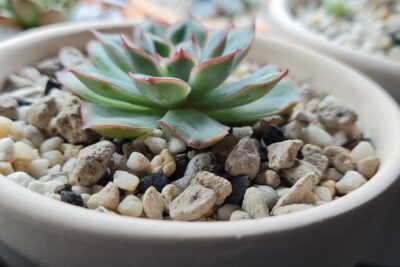
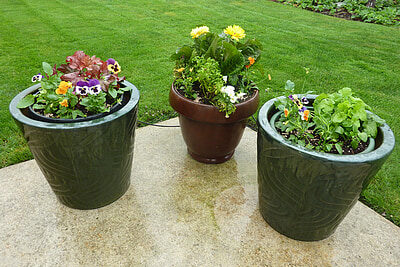


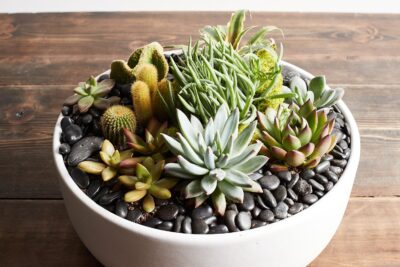
You Must Read